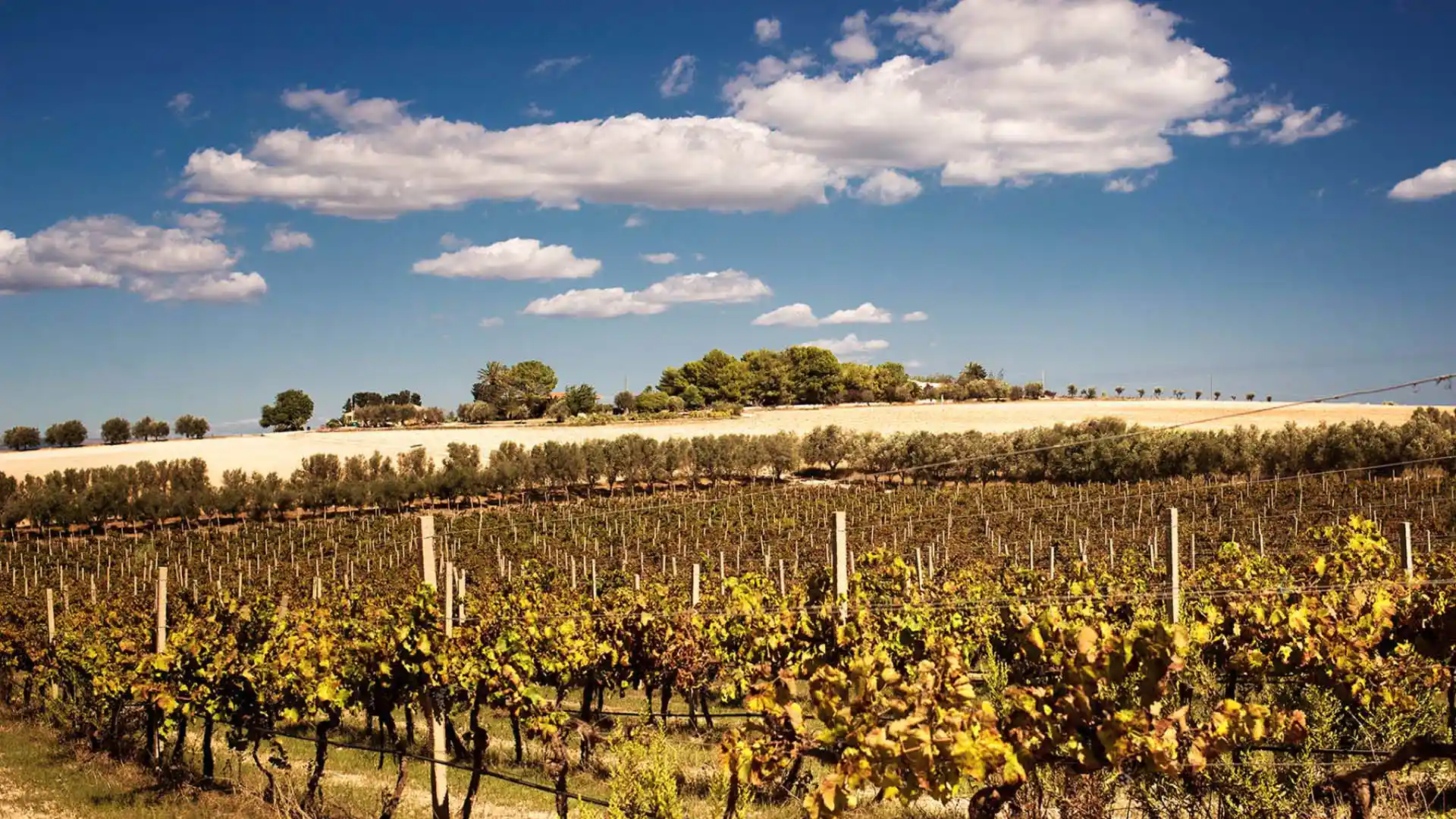Nero d'Avola: the Calabrian d'Avulisi

The ugly duckling has become a swan. This is the story of Nero d'Avola, which, after centuries of being used as a blending wine, has blossomed to express its full value and become the prince of Sicilian reds.
In fact, it was only in the 1970s that serious experimentation began on this vine, both by public institutes and private companies, with the aim of studying and improving this vine capable of producing fine wines with a strong, intense, harmonious and warm character, suitable for ageing in fine wood. The result is the success of many Nero d'Avola wines, which are now as famous outside Italy as they are inside.
There are several differences in character between the Nero d'Avola wines produced in the western part of Sicily and those in the eastern areas: the former are almost always more powerful and decisive on the palate, while the Nero d'Avola wines produced in the east of the island are often characterised by more elegant and mineral notes, with distinct hints of fruit.
Nero d'Avola is at its best both on its own (and has a great capacity for ageing) and in fascinating, silky blends where it is blended with Merlot, Cabernet Sauvignon and especially Syrah. The oldest of these blends, however, is Cerasuolo di Vittoria Docg, made from Nero d'Avola and the ancient Spanish variety Frappato produced on the southern coast of Sicily between Ragusa and Gela.

They called it Calabrese
Nero d'Avola is also traditionally called Calabrian, although there is no trace of its historical presence beyond the Strait of Messina. So what? The name "Calabrese" seems to come from a mistranslation of the Sicilian dialect "calaurisi", formed by combining the words "calea" - meaning grape - and "aulisi" - meaning Avola, a village in the province of Syracuse. The term was often used commercially in the 18th century, when (truly) Calabrian wines enjoyed a flourishing trade with France, which apparently found them particularly suitable for adding body and colour to local red wines.

A grape variety that embraces the entire region
Nero d'Avola is grown all over Sicily, but the best area for its production is the south-eastern part of the island, which includes the areas of Avola, Noto and Pachino, with the districts of Buonivini, Bufalefi, Maccari and Archi. But don't be surprised if you find it abroad: Nero d'Avola is also grown in California, Australia and, in recent years, Turkey.
Nero d'Avola has no DOC linked to its name and/or vine variety, but it is present in several Sicilian DOCs, including Marsala, Santa Margherita di Belice, Cerasuolo di Vittoria, Contea di Sclafani, Menfi, Sambuca di Sicilia and Eloro.
There is also a curious difference in character between the Nero d'Avola wines produced in the western part of the island and those produced in the eastern areas: the former are almost always rougher and have a violent impact on the palate; the Nero d'Avola vines grown in the eastern part of Sicily, on the other hand, are characterised by greater finesse, with distinct hints of fruit.

What is it like?
When you think of Sicily and Nero d'Avola, you think of sun and heat, and these characteristics are all found in the structure of this wine. The body is usually full-bodied, strong, powerful, although it must be said that Nero d'Avola wines from the Etna area, on the other hand, retain an uncommon minerality.
The red colour is ruby, with violet reflections when young, or garnet if aged. The nose reveals sumptuous, warm aromas of morello cherries and plums, jam, fruit under spirits, with spicy touches. In the mouth, depending on ageing, it may reveal intriguing aromas of blackberries, blackcurrants, raspberries, chocolate, leather and tobacco. However, the taste will always be deep, with great depth and structure and high softness.
Nero d'Avola goes very well with important first courses of Sicilian cuisine, as well as with roasted or grilled red and white meats. Young vintages can also accompany tasty fish dishes and a tuna steak.







